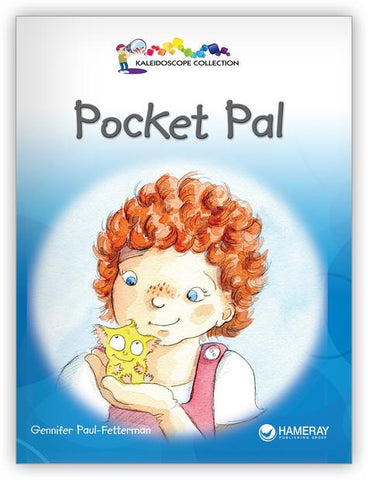 This is a guest post by Rhonda McDonald, a Title 1 Reading Specialist in Botetourt County Public Schools, Virginia, and author of two books in our
Kaleidoscope Collection
:
Polar Bears
and
The White Whale
.
This is a guest post by Rhonda McDonald, a Title 1 Reading Specialist in Botetourt County Public Schools, Virginia, and author of two books in our
Kaleidoscope Collection
:
Polar Bears
and
The White Whale
.
The Developmental Writing Stage of Strings of Letters: 5–6 years old
 Children in the “Strings of Letters” stage of writing are aware that symbols represent letters of the alphabet.
They may not know the names of letters, but they are beginning to understand that these symbols give a message. Uppercase and lowercase alphabet letters as well as numbers or shapes will be randomly mixed in a line on a page. Spacing of “words” is not yet present. Motor control of holding a writing tool is improving.
Children in the “Strings of Letters” stage of writing are aware that symbols represent letters of the alphabet.
They may not know the names of letters, but they are beginning to understand that these symbols give a message. Uppercase and lowercase alphabet letters as well as numbers or shapes will be randomly mixed in a line on a page. Spacing of “words” is not yet present. Motor control of holding a writing tool is improving.
As the concept of print develops, a child in this stage is able to look around the room and copy print that they see. The string of symbols will have little meaning to the reader but the child is able to tell about it.
Encourage the child to draw an illustration to go with the writing.
Talk about the picture and ask them to add details. Praise their efforts. Model the importance of writing to communicate messages by writing short notes to them. Your message may contain some words and some pictures in a rebus style. The child is beginning to learn the letters in their name.
 The book
Shoes Come in Twos
(guided reading level F) from the
Kaleidoscope Collection
introduces rhyming.
As children develop phonemic awareness, listening to stories told in rhyme makes it fun to play with words.
Mother Goose rhymes or Dr. Seuss books are easy to read over and over as bedtime stories. Most are told in predictable rhyme patterns. Read a line, when you come to the next word that rhymes, pause and wait for the child to tell you the word.
The book
Shoes Come in Twos
(guided reading level F) from the
Kaleidoscope Collection
introduces rhyming.
As children develop phonemic awareness, listening to stories told in rhyme makes it fun to play with words.
Mother Goose rhymes or Dr. Seuss books are easy to read over and over as bedtime stories. Most are told in predictable rhyme patterns. Read a line, when you come to the next word that rhymes, pause and wait for the child to tell you the word.
After a little practice, they should be able to hear the rhyme pattern. Ask them to tell you another word that rhymes with a given word: "cat…hat…sat…mat…pat…rat…bat." Nonsense words are fine at this stage of auditory discrimination: "see…tree…dee…gee…ree…vee." Many children’s songs are also told in rhyme.
Story or music CDs are easy to take along with you in the car for opportunities where reading a book is not possible. Many public libraries loan sets of story or music CDs. Introducing your child to the treasures of the public library by signing them up for their very own library card; it will show them that you value learning.
 Ben, the Big Brother
(guided reading level C) from the
Kaleidoscope Collection
could be used to introduce the letter
B
and its sound. Young children often have a younger sibling in the home. They can relate to small chores that help out with a younger sibling.
Ben, the Big Brother
(guided reading level C) from the
Kaleidoscope Collection
could be used to introduce the letter
B
and its sound. Young children often have a younger sibling in the home. They can relate to small chores that help out with a younger sibling.
- Point out the letter B in the title of the story. Trace the letter with your finger, and ask your child to do the same. As you trace the letter, say the sound /b/.
- Create upper- and lowercase Bb with pipe cleaners, wikki sticks, or play dough. Ask the child to think of other things that have the /b/ sound: bed, bird, bat, baby, ball, big, butter, basket, beach, blue, black, etc.
- Name three things (example: ball, cup, and bed). Ask them to say which word does not begin with the same sound. As you practice this auditory discrimination game, they will develop the ability to hear the correct sounds that match. Learning the sounds of the letters gives meaning to the symbols Bb on a page of print.
 Pocket Pal
(guided reading level E) from the
Kaleidoscope Collection
may also be used to introduce the letter
Pp
. Similar activities as those mentioned above help to make the letter
Pp
become real to the child.
Pocket Pal
(guided reading level E) from the
Kaleidoscope Collection
may also be used to introduce the letter
Pp
. Similar activities as those mentioned above help to make the letter
Pp
become real to the child.
- Pour some salt into a cookie pan. Trace the letter Pp in the salt with your finger. Flour or sand could also be used.
- Spray a tabletop with shaving cream. With your finger, trace the Pp in the shaving cream. Say the sound as you trace the letter.
- Draw the letter onto a piece of tagboard. Create Pp by gluing macaroni or cereal to the letter. Trace the shape of the 3D letter.
- Paint letters onto large pieces of paper with watercolors. Introduce letters that have similar features, such as letters with a circle ( o , p , c , g , q , b , and d ), letters with straight lines ( i , l , t , v , w , and z ), and letters with tails ( y , g , p , and q ).
- As they begin to master one or two letters, slowly introduce new ones.
~~~
For more information on the Kaleidoscope Collection , you can download information sheets by clicking on the image below.













































![6 Fun and Easy Activities to Practice Sequencing [Grades K-1]](http://www.hameraypublishing.com/cdn/shop/articles/Red_Typographic_Announcement_Twitter_Post-5_bf1ae163-a998-4503-aa03-555b038d1b76_600x.png?v=1689961568)
![Leveraging Prior Knowledge Before Writing and Reading Practice [Grades 1–2]](http://www.hameraypublishing.com/cdn/shop/articles/Red_Typographic_Announcement_Twitter_Post-4_600x.png?v=1689961965)




